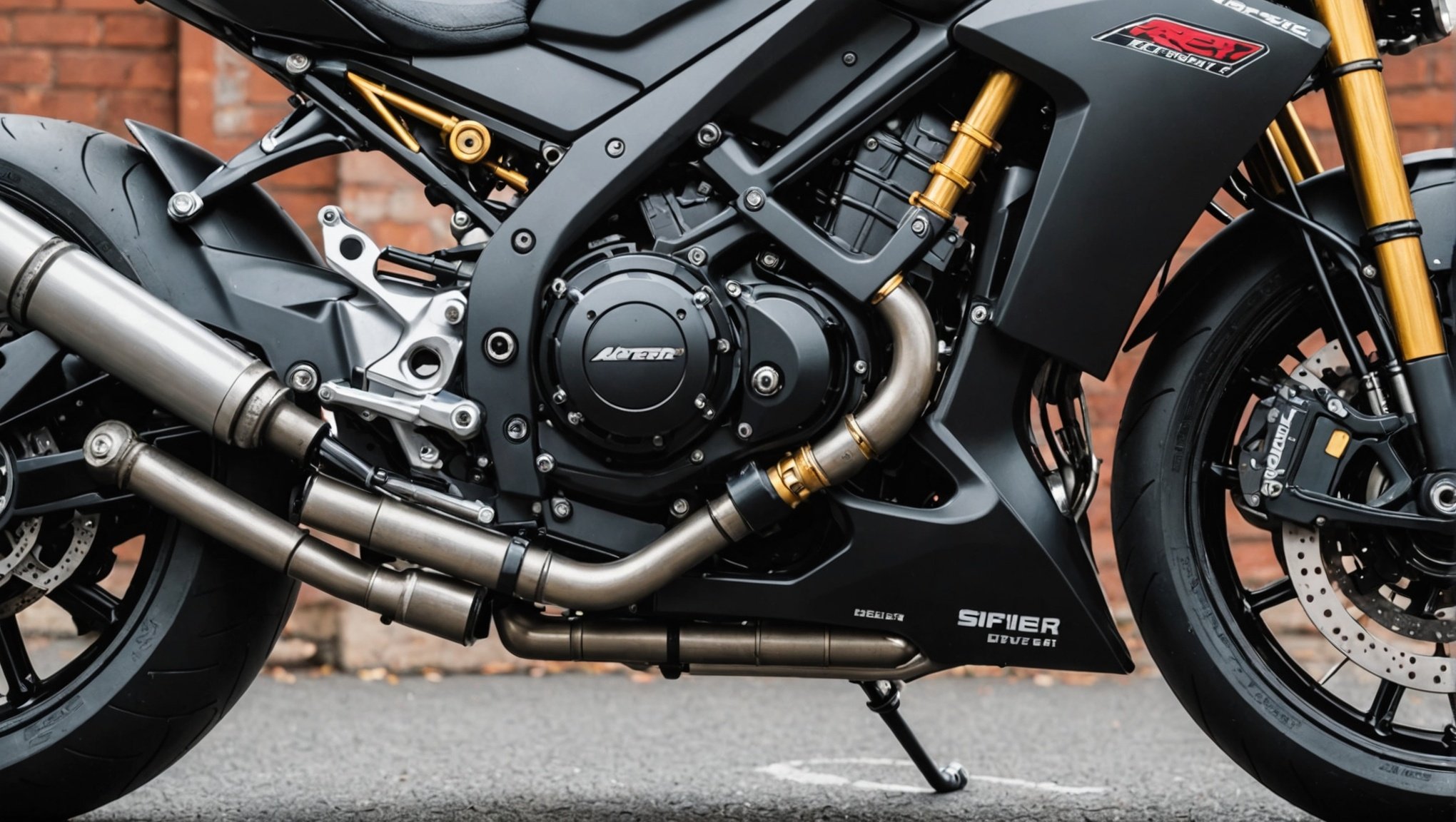Ultimate Guide to Selecting and Installing Aftermarket Frame Sliders for UK Sport Bikes
When it comes to enhancing the protection and performance of your sport bike, one of the most crucial aftermarket parts you can consider is frame sliders. These components are designed to safeguard your bike’s frame and engine in the event of a crash or a slide, making them an essential investment for any serious rider. Here’s a comprehensive guide to help you select and install the best frame sliders for your UK sport bike.
Understanding the Importance of Frame Sliders
Frame sliders, also known as crash protectors or frame guards, are engineered to absorb the impact of a crash, redirecting the force away from the bike’s critical components such as the engine, frame, and fairings. Here’s why they are a must-have for any sport bike enthusiast:
Additional reading : Mastering Throttle Response: Tips for Enhancing Fuel Efficiency During Urban Riding in the UK
- Protection Against Damage: In the event of a low-side crash, frame sliders can significantly reduce the damage to your bike’s expensive parts. This can save you a substantial amount of money in repair costs.
- Enhanced Safety: By protecting the frame and engine, frame sliders help ensure that your bike remains stable and functional even after a minor crash, reducing the risk of further accidents.
- Peace of Mind: Knowing that your bike is better protected can give you the confidence to push your limits on the track or during spirited riding.
Choosing the Right Frame Sliders
Selecting the right frame sliders involves several key considerations. Here are some factors to keep in mind:
Type of Material
Frame sliders are typically made from high-density polyethylene (HDPE) or aluminum. Here are the pros and cons of each material:
Also to read : Maximizing Tire Traction for Sport Bikes on the UK”s Challenging Wet Roads: Essential Tips for Riders
- HDPE:
- Pros: Lightweight, excellent impact absorption, and often less expensive.
- Cons: May not be as durable as aluminum, can deform under high impact.
- Aluminum:
- Pros: Highly durable, can withstand significant impacts without deforming.
- Cons: Heavier than HDPE, may be more expensive.
Compatibility
Ensure that the frame sliders you choose are specifically designed for your bike model. Here’s a checklist to follow:
- Check the Manufacturer: Look for reputable brands like R&G Racing, SW-MOTECH, or GBRacing, which offer high-quality frame sliders for a wide range of bike models.
- Consult the Manual: Refer to your bike’s manual or the manufacturer’s website to confirm compatibility.
- Read Reviews: Check reviews from other riders who have installed the same frame sliders on your bike model to get a firsthand account of their performance.
Installation Ease
The ease of installation is another critical factor. Here are some tips:
- Look for Pre-Drilled Holes: Many frame sliders come with pre-drilled holes that match your bike’s frame, making installation simpler.
- Use the Right Tools: Ensure you have the necessary tools and follow the manufacturer’s instructions carefully.
- Consider Professional Help: If you are not comfortable with the installation process, consider taking your bike to a professional mechanic.
Detailed Comparison of Popular Frame Sliders
Here is a detailed comparison of some popular frame sliders to help you make an informed decision:
| Brand | Material | Compatibility | Price Range | Customer Service |
|---|---|---|---|---|
| R&G Racing | HDPE/Aluminum | Honda CBR, KTM Duke, Yamaha R6 | £50-£150 | Excellent customer service, comprehensive installation guides |
| SW-MOTECH | Aluminum | BMW S1000RR, Ducati Panigale, Moto Guzzi V7 | £70-£200 | High-quality products, detailed installation instructions |
| GBRacing | HDPE | Kawasaki Ninja, Suzuki GSX-R, Aprilia RSV4 | £40-£120 | Known for their high-quality engine protection, good customer support |
Step-by-Step Installation Guide
Installing frame sliders is a relatively straightforward process, but it requires attention to detail. Here’s a step-by-step guide to help you through the installation:
Step 1: Prepare Your Bike
- Make Sure the Bike is Clean: Ensure the area around the frame is free from dirt and debris.
- Remove Fairings: You may need to remove some fairings to access the frame. Use a screwdriver and follow the manufacturer’s instructions.
Step 2: Locate the Mounting Points
- Check the Manual: Refer to your bike’s manual or the frame slider’s instructions to locate the mounting points.
- Mark the Points: Use a marker to mark the points where you will drill or attach the sliders.
Step 3: Drill or Attach the Sliders
- Use the Right Tools: Use a drill or wrench as specified in the instructions.
- Tighten Securely: Make sure the sliders are tightly secured to the frame.
Step 4: Test the Installation
- Check for Stability: Ensure the sliders are stable and do not interfere with any moving parts.
- Test Ride: Take your bike for a short ride to ensure everything is in place and functioning correctly.
Practical Tips and Considerations
Here are some practical tips and considerations to keep in mind when selecting and installing frame sliders:
Seat Height and Clearance
- Check Clearance: Ensure the frame sliders do not interfere with the rear wheel or any other moving parts.
- Adjust Seat Height: If necessary, adjust the seat height to maintain comfortable riding ergonomics.
Lever Guards and Other Accessories
- Consider Lever Guards: If you are installing frame sliders, it might also be a good idea to install lever guards to protect your motorcycle levers.
- Other Parts and Accessories: Think about other protective parts such as swingarm spools and rear wheel protectors to enhance overall protection.
Pros and Cons of Different Brands
Here’s a brief overview of the pros and cons of some popular brands:
- R&G Racing:
- Pros: High-quality materials, easy installation, excellent customer service.
- Cons: Can be more expensive than some other brands.
- SW-MOTECH:
- Pros: Durable aluminum construction, detailed installation guides.
- Cons: Generally more expensive, may require more effort to install.
- GBRacing:
- Pros: High-quality HDPE material, good customer support, competitive pricing.
- Cons: May not be as durable as aluminum options.
Customer Testimonials and Reviews
Here are some testimonials from riders who have installed aftermarket frame sliders:
- “I installed R&G Racing frame sliders on my Honda CBR600RR and was impressed by the ease of installation and the quality of the materials. They have given me peace of mind when riding aggressively.” – John D.
- “After a minor crash, my SW-MOTECH frame sliders saved my BMW S1000RR from significant damage. Highly recommend them!” – Sarah K.
- “GBRacing frame sliders are a great value for the price. They are easy to install and have protected my Kawasaki Ninja 650 well.” – Mark T.
Selecting and installing aftermarket frame sliders is a wise decision for any sport bike enthusiast. By understanding the importance of these components, choosing the right material and brand, and following a step-by-step installation guide, you can significantly enhance the protection and performance of your bike. Remember to consider factors such as compatibility, ease of installation, and customer service when making your decision. With the right frame sliders, you can ride with confidence, knowing your bike is better protected against potential damage.
Final Checklist
Before you make your final decision, here is a checklist to ensure you have covered all the essential points:
- Choose the Right Material: Decide between HDPE and aluminum based on your needs and budget.
- Ensure Compatibility: Check that the frame sliders are designed for your specific bike model.
- Read Reviews: Look at reviews from other riders to get a firsthand account of the product’s performance.
- Check the Price: Compare prices from different brands and consider the value for money.
- Consider Additional Parts: Think about other protective parts such as lever guards and rear wheel protectors.
- Follow Installation Instructions: Use the manufacturer’s instructions to ensure a smooth and correct installation.
By following this guide, you can make an informed decision and enjoy a safer, more confident riding experience.











